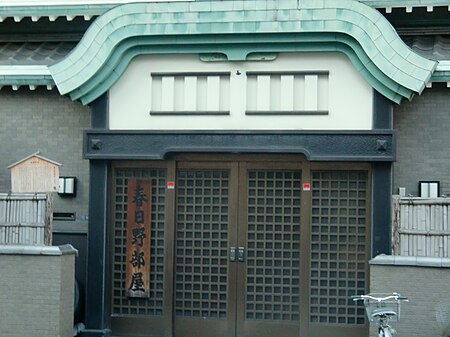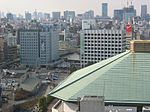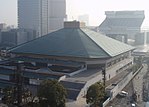Kasugano stable

Kasugano stable (春日野部屋, Kasugano-beya) is a stable of sumo wrestlers, part of the Dewanoumi ichimon or group of stables. As of January 2022 it had 18 wrestlers. It has been led by former sekiwake Tochinowaka Kiyotaka since 2003. It was one of the most successful stables in 2013, with six sekitori wrestlers, including the Georgian Tochinoshin and the now retired Japanese born (but Korean national) Tochinowaka Michihiro, who used the current head coach's old ring name. It was founded in the mid 18th century by a wrestler named Kasugano Gunpachi. It became inactive for a long time but was led in the Meiji period by a referee named Kimura Soshiro (this is no longer allowed as oyakata must now be former wrestlers). He adopted as his son the 27th yokozuna Tochigiyama, who led the stable for over thirty years. He in turn adopted as his son the 44th yokozuna Tochinishiki, who became the head in 1959 whilst still an active wrestler and later served as the chairman of the Japan Sumo Association. Tochinoumi took over upon Tochinishiki's death in 1990 and led the stable until his retirement in 2003. The stable absorbed Mihogaseki stable in 2013 when its stablemaster (former ōzeki Masuiyama Daishirō II) reached the mandatory retirement age. Kasugano Oyakata was warned by the Sumo Association in 2011 after he beat three of his charges with a golf club for breaking a curfew. In a separate case, a junior wrestler was convicted in 2014 of an assault on another wrestler and given a three year jail sentence, suspended for four years. In March 2017 the victim sued Kasugano Oyakata and the now retired assailant, saying he was still suffering from the effects of the broken jaw he received and that Kasugano failed to exercise appropriate oversight.
Excerpt from the Wikipedia article Kasugano stable (License: CC BY-SA 3.0, Authors, Images).Kasugano stable
Sumida
Geographical coordinates (GPS) Address Nearby Places Show on map
Geographical coordinates (GPS)
| Latitude | Longitude |
|---|---|
| N 35.6929 ° | E 139.7908 ° |
Address
130-0026 Sumida
Japan
Open on Google Maps











